Viking Sunstones In Saga and Science
A Synopsis of the May Program presented by Dr. Jennifer Bartlett
by Andy Thompson, MSDC Secretary
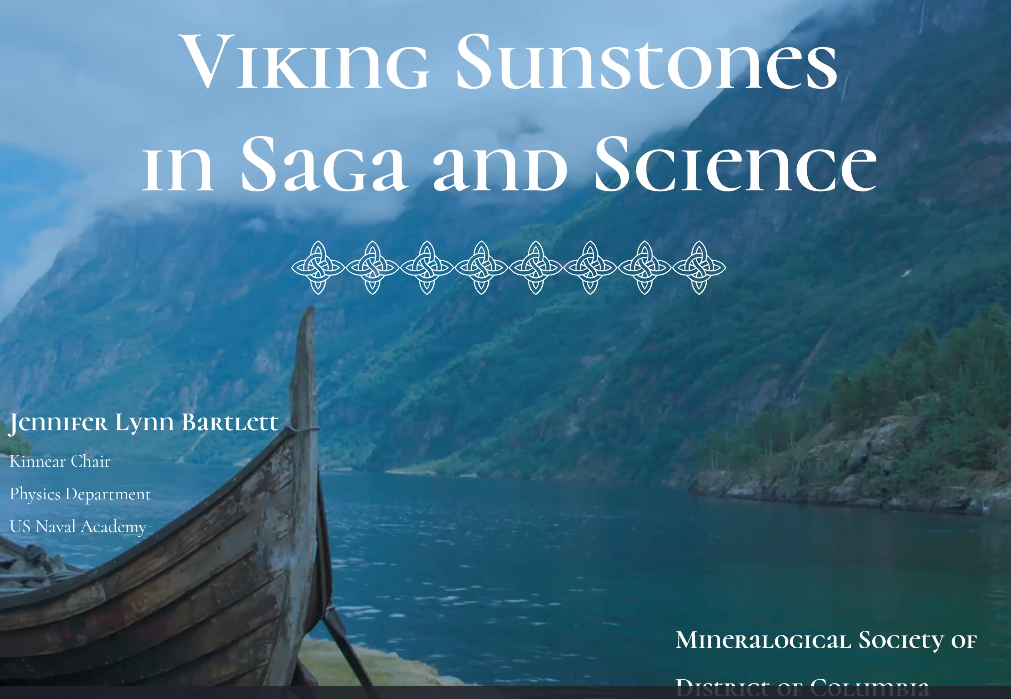
Introduction
Dr. Jennifer Bartlett is an astronomer who is accustomed to interdisciplinary research. She shared with MSDC the idea that Iceland spar (calcite) or cordierite crystals could be the mysterious sunstones, reported in Viking sagas, that may have played an important role in supporting the Vikings’ navigational competencies.
Calcite crystals have a property called double refraction (also referred to as birefringence), an optical phenomenon which causes light to bend (or refract) in two different directions, dividing the light into two polarized rays. Dr. Bartlett surmised that the that Vikings may have used this light-polarizing property to identify the hidden location of the sun on overcast, sunless days, assisting in directional navigation.
As a trained celestial navigator, Jennifer made multiple training voyages with Coast Guard cadets. On a two-month Arctic voyage, she used Iceland spar and found it to be a credible navigational tool. She worked at the U.S. Naval Observatory specializing in predicting the availability of natural light for twilight and night-time naval operations. In August 2021, she transferred and took up her academic position with the U.S. Naval Academy. There, she continues with her research and holds the Kinnear Chair in the Physics Department.
Dr. Bartlett also has had a personal interest in the history of science and has explored earlier technologies which have gotten us to the understanding we have today. That includes researching the lore about the Vikings and the rare references to their use of Viking sunstones and compasses. And, importantly, it also includes Jennifer’s scientific research into predicting the availability of light and night-time navigation and exercises.
The split-image of the two photos shown below illustrate these two aspects of Jennifer’s interest and competencies, as well as of her presentation to MSDC, namely, the Viking lore and the present-day science for instruments measuring light.
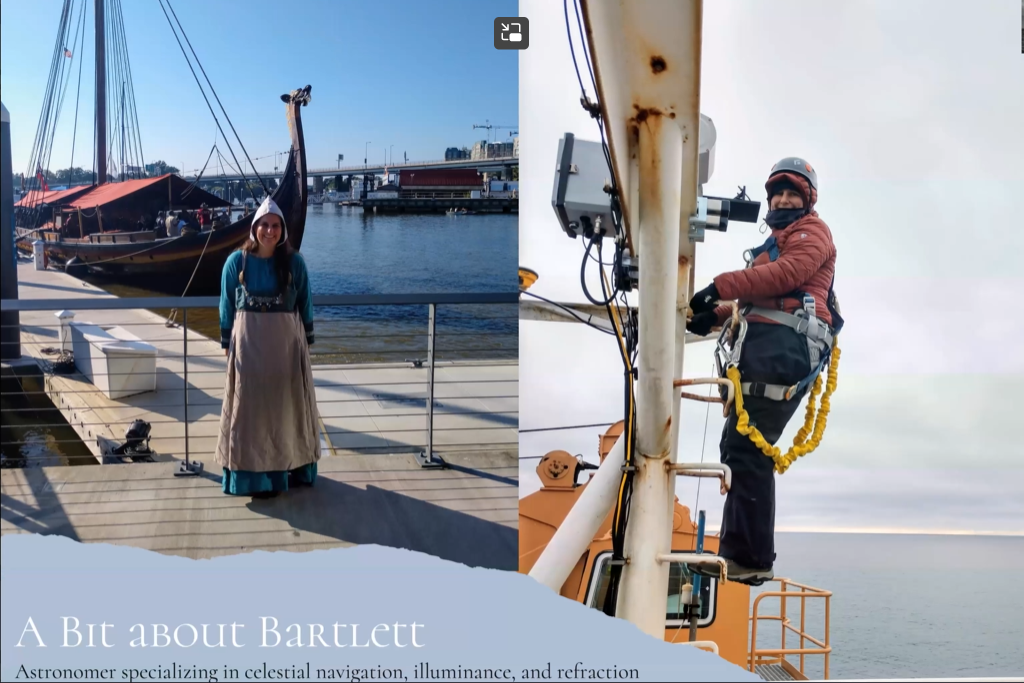
On the left is Jennifer as a historical reenactor. And on the right is Jennifer as a scientist
With regard to the question of the Vikings’ possible use of sunstones to aid their navigation, Jennifer described two criteria for evaluating the Vikings’ possible use of these calcite crystals:
· What we know from the historical written record of the actual use of these calcite crystals, as reflected in the Viking sagas, and
· What we know from science relative to the effectiveness of these calcite crystals and polarized light to help find the sun’s position on an overcast day.
The Saga of Viking Sunstones
The Vikings, of course, were Scandinavian seafarers whose name, she said, translates as “Bay Pirates,” or those who raid others’ ships. Their legendary navigational skills enabled trading missions throughout the Atlantic regions, Mediterranean Sea, and European rivers as evidenced by the artifacts found by archeologists. The Vikings’ heyday was during the 8th through 11th centuries.
The written record offers little support for the widespread use of sunstones as a navigational tool. And yet the Viking culture had a vast travel network which established settlements in far-flung regions including Russia, the Baltics, and across the Atlantic. Their navigational technologies had to have been extraordinary, including exceptionally seaworthy ships and other supports for knowing their location vis-à-vis far-flung lands.
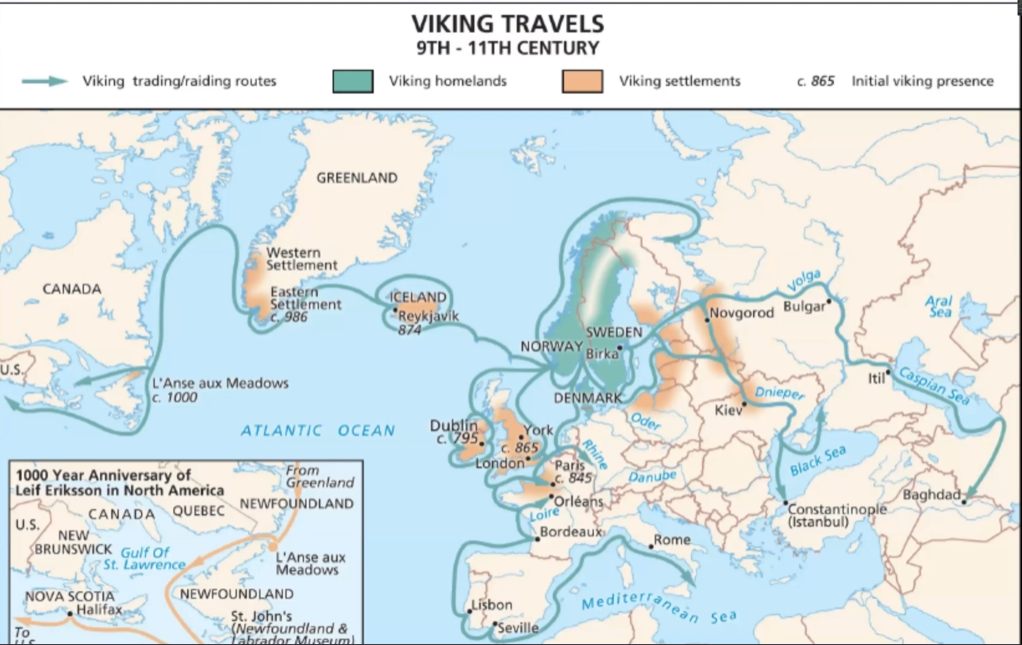
Discovery of Sunstones in Shipwrecks?
Not only is the information from Viking sagas thin, there is a similar dearth of evidence characterizing what maritime archeologists can tell us. Examination of recovered Viking ship wrecks has failed to find evidence of sunstones among the wreckage.
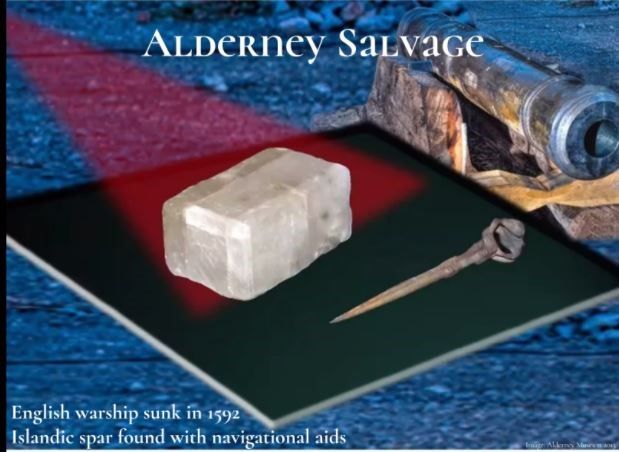
A British warship was sunk near the Alderney Channel Islands in 1592. In that wreck, maritime archeologists did find and salvage a cluster of navigational aids including a piece of Islandic spar. So that provides a bit of evidence suggesting some possible use consistent with the Viking navigational sagas.
The Science of Behind Viking Sunstones
Jennifer explained the mechanics of how a navigator could have used the sunstone to identify the whereabouts of the sun when it was hidden behind an overcast sky.
She explained that when sunlight passes through clouds, the light is scattered as it reflects off particles in the atmosphere. Also, the light, she said, is “lightly polarized.” The image below illustrates how the navigator detects the location of the hidden sun. The navigator holds the rectangular crystal up at eye level and points it toward the sky in a scanning motion. At its brightest point in the sky, the location of the sun will be 90 degrees off from the face of the crystal. The navigator can then repeat this process and point the crystal about 90 degrees opposite from the first scanned direction, moving across the sky as before. This second scanning can identify a second line of sight 90 degrees from the face of the crystal. As noted in the image below, the intersection of those two sight lines will be the location of the sun.
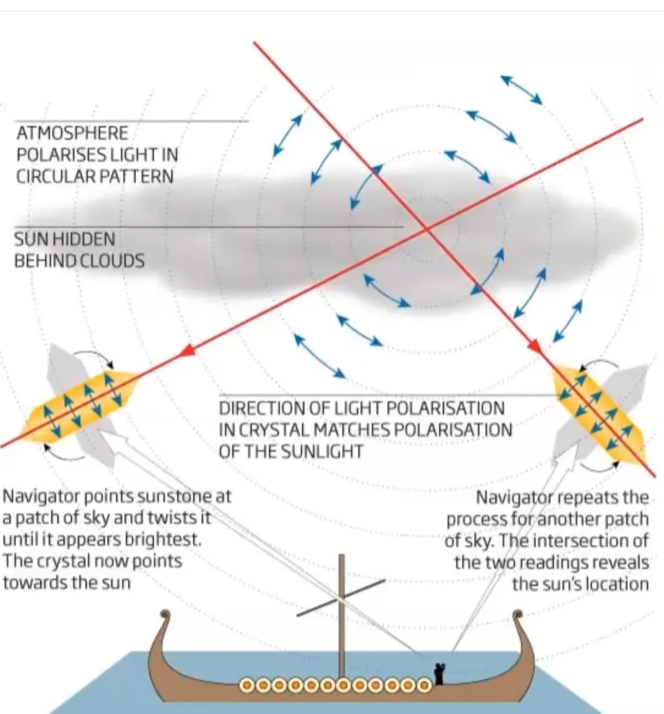
Jennifer explained that there are two primary minerals that can be used to make this happen, cordierite (below, on the left) and Iceland spar, or calcite (below, on the right). Jennifer provided the following explanation. A basic requirement is that both crystal specimens must have a high level of clarity or transparency. Also, both crystals must show the optical property of double refraction, or birefringence, meaning they split an incoming ray of light or image into two distinct pathways, resulting in a double image.
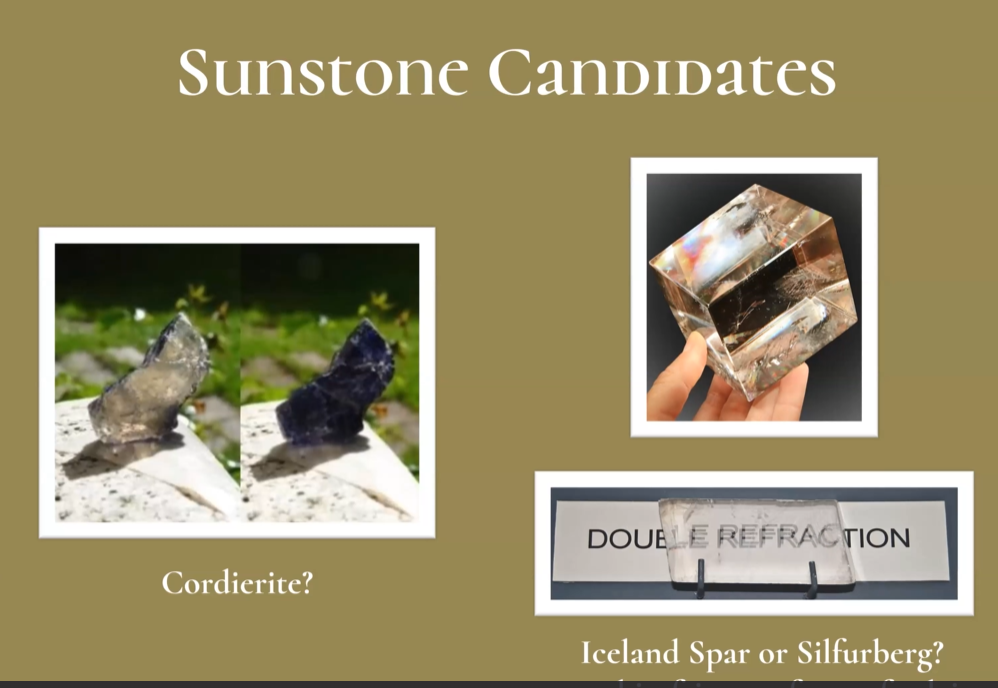
When the navigator is rotating the sunstone crystal, he or she is determining which direction the crystal is facing when the two rays or images become one. That establishes the direction from which the incident, or original ray of light is coming from the sun.
Iceland spar, Jennifer noted, is a particular form of calcite having a high level of clarity and transparency. Historically it was mined primarily in the Nordic countries of Norway, Sweden, and Denmark and has been viewed as a common, rather than rare, mineral. Over the last two centuries, those Nordic mines, for the most part, have been tapped out. For about the past century, Mexico and South America have been the main sources of calcite and cordierite. Today those crystals still are used extensively in optical equipment. The properties of each are listed below.
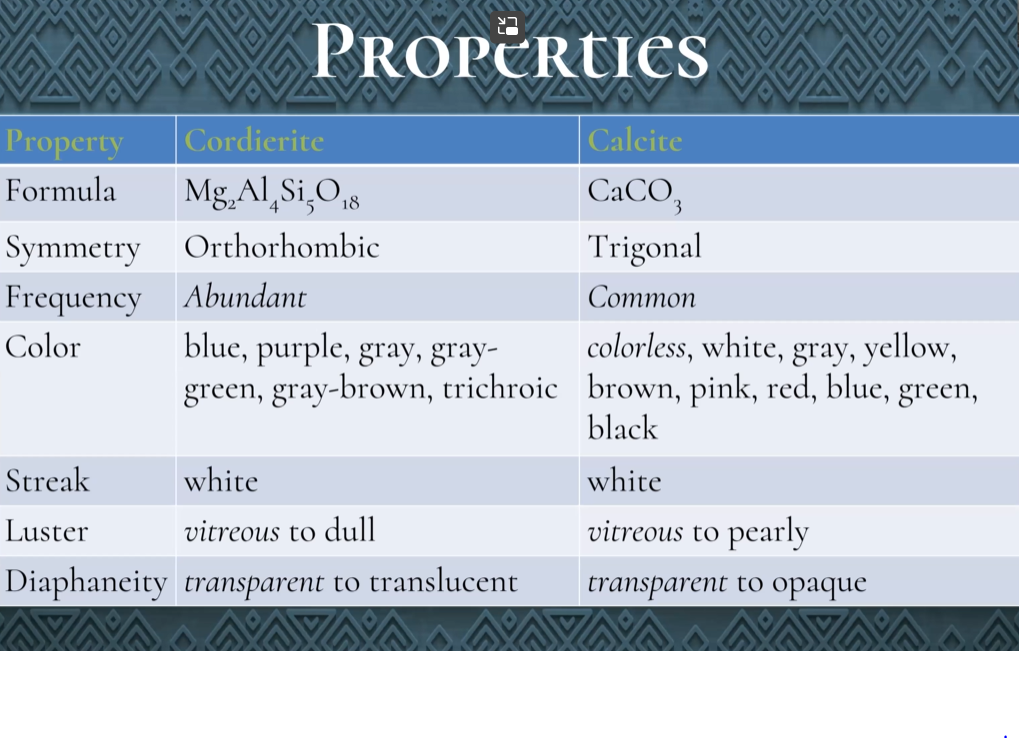
Interestingly, Jennifer noted that the two early scientists who studied and theorized about light, Christian Huygens and Sir Isaac Newton, worked with and wrote about Iceland spar when they formulated their theories about the nature of light, respectively, as either a wave or as a particle (corpuscle).
Conclusion
Jennifer asked the question: Could the Vikings have used Iceland Spar as a navigational tool? She answered with a definite “Yes!” But, did they? “Maybe” she replied. More research is needed.
The MSDC audience applauded Jennifer’s interesting presentation and Cindy Schmidtlein, MSDC's VP for Programs, then opened the floor for questions.
To gain a greater understanding of the important role played by the double refraction quality of Iceland spar, readers will want to tap into and view for themselves the recorded video of Jennifer’s talk and PowerPoint presentation, including the question-and-answer session which further explored the historical record, calcite’s optical uses, as well what is known about the Viking Sun Compass.
The recording of Jennifer’s presentation is now on line at: Iceland Sunstones in Viking Navigation - Saga and Science, with Dr. Jennifer Bartlett - YouTube
